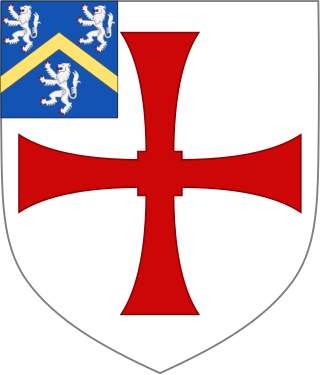
The vice-chancellor and warden is the chief executive officer of Durham University. The vice-chancellor also holds the position of "Warden of the Durham Colleges" and is appointed by Council. Reporting to the vice-chancellor and warden (and also members of the university executive committee) are the deputy vice-chancellor, pro-vice-chancellors for research, education and each of the faculties (Arts and Humanities, Science, and Social Science and Health), the pro-vice-chancellor and deputy warden of the colleges, the registrar (chief operating officer) and the treasurer (chief financial officer). [1] [2] [3]
Contents
- Wardens of Durham University
- Sub-wardens
- Vice Wardens
- Vice-chancellors
- Vice-chancellors and wardens
- Pro-vice-chancellors
- Pro-vice-chancellors and deputy vice-chancellors
- Deputy vice-chancellors and provosts
- See also
- Notes
- References
Under the original constitution of the university, the post of Warden combined the roles of chief executive and formal head of the university. Charles Thorp was appointed acting warden in December 1831 by Bishop William van Mildert, and in 1834 he was appointed to the position on a permanent basis by the dean and chapter of Durham Cathedral (who were then the governors of the university). After Thorp's death in 1862, the post of Warden was held ex officio by the Dean of Durham, with Sub-Warden (which had previously been rotated between the professors of the university) becoming a permanent post, presaging the vice-chancellorship. [note 1] From 1909, with the creation of the federal university, and the handing over of the dean and chapter's responsibilities to the newly formed council, the executive and formal roles were officially separated into the vice-chancellor (executive head) and the chancellor (formal head), with the warden becoming the chancellor and the sub-warden becoming the vice-chancellor. The vice-chancellor was elected by the council to serve a two-year term. In 1937 the permanent posts of Warden of the Durham Colleges and Rector of King's College were created, with the vice-chancellorship being held by each for two years at a time.
With King's College becoming Newcastle University in 1963, the wardenship of the Durham Colleges was permanently united with the vice-chancellorship as the vice-chancellor and warden. [4] [5] [6] The university numbered Chris Higgins as its 23rd vice-chancellor and warden, implying a count starting with the university's reconstitution in 1909 and continuing through the further reconstitutions in 1937 and 1963 despite the changes of title over this period. [7]

The official residence of the vice-chancellor and warden is Hollingside House, formerly home to John Bacchus Dykes. [8] [9]
In May 2021, the University Council announced that Professor Karen O’Brien would become the university's first female vice-chancellor and warden, taking her post in January 2022. Antony Long, the deputy vice-chancellor and provost, served as interim vice-chancellor from August 2021 until January 2022. [10]









